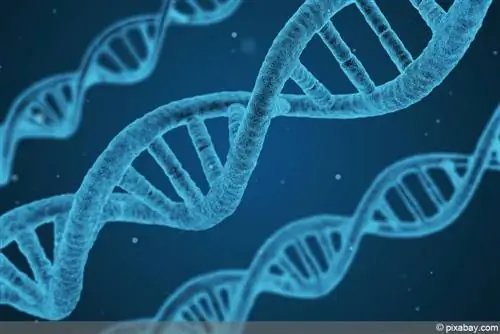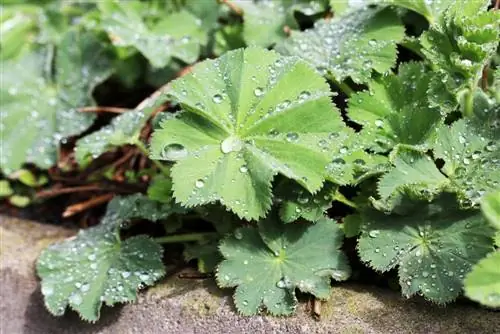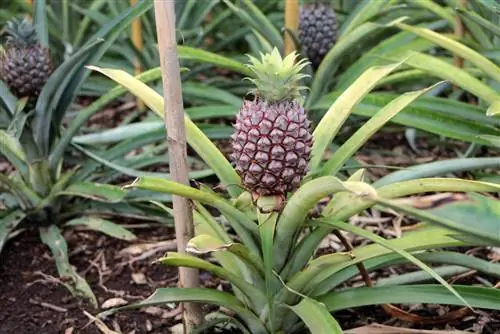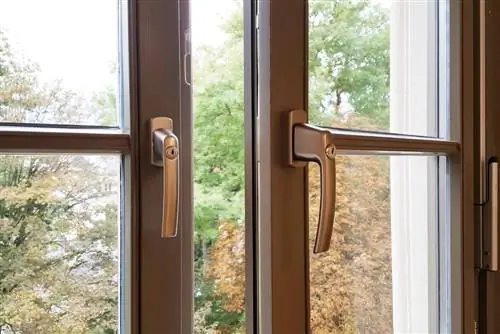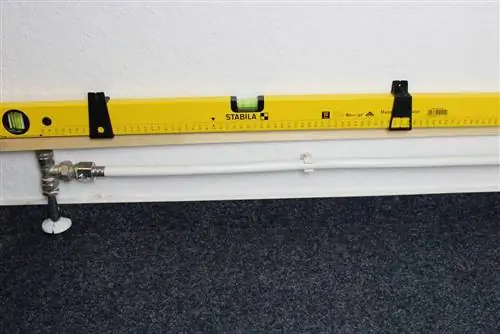- Author admin [email protected].
- Public 2023-12-17 03:39.
- Last modified 2025-06-01 06:48.
Meristem propagation is still a fairly new type of plant propagation. But it is already widely used. On the one hand, because some plants can only be propagated in this way without viruses and bacteria. On the other hand, because this method allows numerous and genetically identical young plants to be grown from a single mother plant. However, the procedure itself is difficult to carry out due to the equipment, precautions and knowledge required. However, if you have patience and a little willingness to experiment, you can still achieve amazing success.
Definition
Meristem propagation is also known as in vitro propagation. “In-vitro” means “in a glass” in Latin. What we mean here is propagation in a petri dish or test tube. This may come as a surprise to hobby gardeners who have previously worked with seeds, cuttings and dividing roots. In fact, meristem proliferation is already being carried out on a large scale. Plants reproduce from individual cell groups and under sterile conditions.
The cells are removed from the plant, placed on a nutrient medium and treated with nutrients and phytohormones until roots and shoots form. They are then placed in substrate and cultivated according to the requirements of the respective plant. Roughly speaking and greatly simplified, it is a type of cutting propagation on a microscopic scale and under sterile conditions.
Advantages
As already mentioned at the beginning, meristem proliferation offers two decisive advantages. Above all, the economic advantage is hard to ignore: significantly more offspring can be grown from a single mother plant than from cuttings or seeds. Ultimately, only a few cells are required as starting material for a daughter plant. In addition, some plants can hardly be propagated in any other way. Possible reasons for this are that division, forming cuttings or growing seeds is extremely complex and takes a lot of time.
In addition, bacteria, fungi and viruses as well as other phytopatogens make it difficult for some plants to propagate via cuttings and culture. For this reason, strawberries, raspberries and kiwi, for example, are now mainly generated via meristem proliferation. Young plants obtained in this way are free of pathogens because they are grown under sterile conditions. The risk of sick offspring is also reduced.
The Meristem
The starting material for meristem proliferation is the meristem. This is the plant's forming tissue. This type of tissue is still undifferentiated. They can therefore develop into roots, fruits or leaves and, at least theoretically, divide indefinitely. The best conditions to be used for propagation and to create numerous plants from small amounts of cells.
These plant stem cells are located in the very ends of the root tips and shoot tips. They also have thin cell walls with a very low cellulose content. They differ from the surrounding cells precisely with regard to the cell walls. Of course, this is only visible under the microscope.
Sterile conditions
The upper shoot tips are generally particularly suitable as a meristem for in vitro propagation, as they are usually still free of viruses even if a viral disease is present. To ensure that the pathogens cannot subsequently spread to the cells or plant parts, sterile conditions are essential for meristem propagation. The cultivation containers must therefore be sterile and lockable. Petri dishes with lids have proven useful for the initial stages. Later, taller glasses are used. In the professional implementation of meristem proliferation, a special atmosphere is created that is continuously regulated. This requires, among other things, a sterile workbench or safety workbench.
Disinfect
Sterile workbench and vessels are necessary for meristem propagation, but alone are not sufficient. Germs can be introduced with the meristem cells. It doesn't matter whether these were already present on the plant or were added to the nutrient medium on the way from the plant. Bacteria, fungi and viruses can, in turn, significantly reduce the success rate. It is therefore necessary to additionally disinfect the cell clusters after removal from the plant to kill bacteria and fungal spores.
According to various sources, the following three means are used for this:
- Sodium hypochlorite
- Hydrogen peroxide
- Mercury II chloride

Sodium hypochlorite and hydrogen peroxide are each available at the pharmacy. The use of mercury II chloride to disinfect plants and seeds is prohibited, at least in the private sector. However, the concentration of the available substances must also be paid very close attention to.
Sodium hypochlorite for disinfection
In professional meristem propagation, sodium hypochlorite is used to disinfect the cell clusters. The chemical substance is also known as chlorine bleach and is often referred to as “active chlorine” in cleaning products. The aggressive agent should therefore not be used undiluted on plant cells.
Concentrations of 5 to 25 percent are usual here with an exposure time of 5 to 30 minutes. Sodium hypochlorite should therefore only be used in an appropriate dilution. After disinfection, the cells are also rinsed several times with distilled and sterile water.
Hydrogen peroxide
For rinsing plants and plant cells, some sources suggest a solution with 0.15 per mille or 0.015 percent hydrogen peroxide. For household purposes, a 3 percent hydrogen peroxide solution is available in pharmacies. In order to align this with a hydrogen peroxide content of 0.015 percent, the following calculation is required: Percentage of the starting solution - desired percentage of the disinfectant solution=difference and therefore water content in the mixing ratio
With the 3 percent solution the calculation is: 3 - 0.015=2.985
This means that 0.015 parts of the 3 percent solution must be added to 2.985 parts of sterile, distilled water. A little more descriptive and practical for meristem propagation is 1.5 milliliters of the solution to 29.85 liters of water.
Culture medium and nutrients
This is where things get complicated. Although there are nutrients that must always be contained in the nutrient medium, the respective concentration depends on the respective plant species. A mixture of agar as a gelling agent and sucrose as a nutrient solution can serve as a base. The solution should contain 20 to 30 grams of sucrose per liter of water. Agar is used as needed.
Macronutrients
The important macronutrients for meristem proliferation are:
- Nitrogen
- Phosphorus
- Potassium
- Calcium
- Magnesium
- Sulfur
The concentrations of these substances are very species-dependent. Even in the scientific sources there are considerable differences in the information, which for example is between 0.95 and 1.9 grams per liter for potassium alone.
Tip:
If you want to start experiments yourself, you have to experiment carefully. The content of the individual macronutrients in special fertilizers for this plant type can provide guidance here.
Micronutrients
The important micronutrients for plants in general and meristem reproduction in particular are:
- Iron
- Manganese
- Zinc
- Boron
- Copper
- Molybdenum
If they are completely missing or are present in too low a concentration, deficiency symptoms occur. Iodine and cob alt are also said to have an effect on growth. However, this has not yet been scientifically proven. Here again, the quantities vary greatly and depend on the type of plant. Again, special fertilizers for the respective plant can be used for guidance.
Vitamins and amino acids
B vitamins are crucial for meristem proliferation.
Count here:
- Biotin - Vitamin B7
- Folic acid - vitamin B9 or vitamin B11
- Nicotinic acid - vitamin B3
- Pyridoxine - Vitamin B6
- Thiamine - Vitamin B1
Although plants can produce these themselves, they are still added to some common growing media to promote growth and increase the success rate.
Phytohormones
Since the meristem is still undifferentiated cells, they need appropriate impulses. Otherwise they would not develop into roots, shoots and leaves. They receive these impulses from the four phytohormones:
- Auxine
- Cytokinins
- Gibberellins
- Abscisic acid
Some ready-made nutrient media already contain these as well as the macro and micronutrients. If you make your own mixture, they must be added. This in turn represents a challenge, as the quantity and ratio to each other have to be tested.
Rating
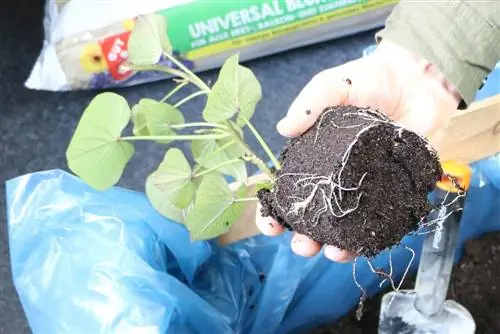
If the cells divide successfully during meristem reproduction and the phytohormones ensure the desired development of the individual plant organs, young plants grow. These are genetically identical to the mother plant, so strictly speaking they are clones. Despite this success, there may still be problems along the way. As a rule, these are triggered by introduced germs that can thrive on the nutrient medium just as well as the plant cells themselves. Ratings are therefore very important. If the nutrient medium becomes cloudy, deposits or discolored, the specimen in question should be sorted out. The checking and removal is called grading.
Planting out
Once the young plants have reached a height of around five centimeters and are strong and he althy, they can be planted in an appropriate substrate. From this point on they can be cultivated as required by the respective plant species.
The alternative to your own meristem propagation
Due to the requirements and the necessary equipment, own attempts at meristem propagation actually only make sense if more than one mother plant is to be propagated. Furthermore, it is not an easy undertaking. Preparing a suitable and coordinated culture medium and keeping the cells sterile is difficult to achieve in a private household. Nutrient gels can also be purchased ready-made. For example at the PhytoTechnology Larboratories.
If you want to save yourself the effort and expenses, including for the sterile workbench, you can also have your own plants propagated. This is offered, for example, by the In Vitro Plant Service in Quedlinburg.
Conclusion
Meristem propagation is a good way to grow numerous plants from a single mother plant and is often the only way to achieve he althy offspring, especially with virus-susceptible plants. With the right equipment, it can also be carried out by laypeople. From obtaining the meristem cells under the microscope to preparing a suitable nutrient medium and scoring, this variant of propagation also represents a challenge.

